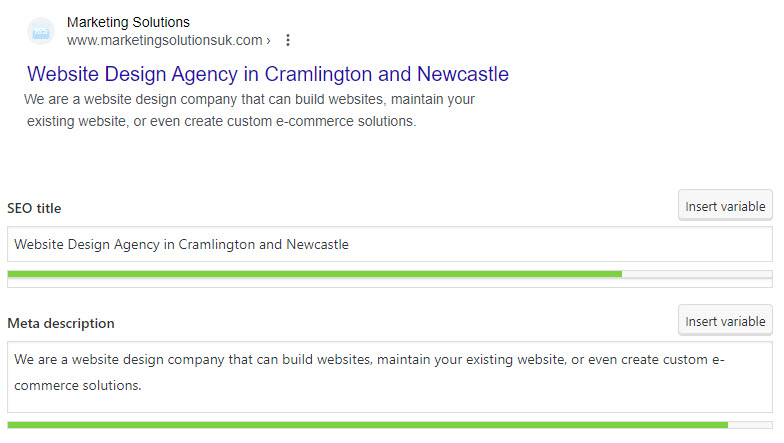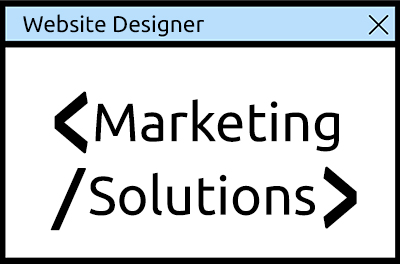
Creating effective meta tags for your website is crucial. Knowing how to craft the perfect meta tag can help you attract more visitors and generate more leads. It’s important to keep in mind the basics behind writing successful meta tags in order to increase your website’s visibility.
Your website can reach customers, but SEO can help them find you. For better google rankings, you must have good meta tags.
Our CMS allows us to change the meta titles and descriptions on your web pages, but do you know what these are and how to craft them effectively?
What Are Meta Tags?
Meta tags are HTML elements used to provide information about a webpage. They’re commonly found in the section of an HTML document and are utilised to describe the content on the page in order to make it more search engine friendly.
Meta tags contain keywords that can be used by search engine bots when indexing websites for relevant content.
Meta tags are places where you can provide search engines with information about your web page, though the content isn’t visible on the page itself. The two most important tags include the meta title and meta description.
Meta Title
The meta title is a crucial part of your web page. It is important that you include it with every page of your website.
The meta title is the text that appears in the search engine results pages and it should accurately reflect the content of the page.
When it comes to ranking, the meta title is number one. This is what tells Google what the page is about and appears at the top of your browser tab. In addition, search engines routinely use this tag as a link to your site in their results.
This is how the meta title will appear in the source code of your website:
<title>Your title tag keywords go here<title>
The words in your title tag are important as they will help define your website to search engine algorithms. These words are equally significant when it comes to determining the relevance of your content for potential visitors.
The title tag is essential for telling the search enginesd what the page is about. It should include the key phrases you wish to target on the web page (so that people make a search and find your page) and entice them to visit the website.
Our CMS will generate the meta title from the web page’s name, but you have the option to override that. This is especially helpful for the home page since it usually just says “Home,” and by changing it to your business name and what you do, it’s easier for potential customers to find your website.
Not capitalising on this opportunity means missing out on some great visibility.
An example of our website title tag is:
Website Design Agency in Cramlington and Newcastle
This outlines essential elements of our company, including location and name, which are configured in the Content Management System (CMS) with a meta description.

Meta Title Best Practice
- When writing a website’s meta title, it is important to keep it concise and descriptive. It should accurately reflect the content of the page, and include relevant keywords in order to maximise visibility within search engine results. It is also beneficial to ensure each page has its own unique meta title.
- All pages on your website should have distinct title tags since identical ones can be recognized as an issue by search engines, which can lead to decreased visibility.
- It is essential to include the keywords that are important for search engine optimisation. These words should be included in this particular page, as it will greatly increase the chances of being discovered by potential viewers.
- Ideally, the characters should be fewer than 60.
Meta Description
A meta description is a brief description of a web page which is included in the source code and which appears in search engine results. It should provide an overview of the content on the page and must be written uniquely to avoid duplicate content.
The meta description is usually the text displayed underneath your link in search engine results, and it can have an effect on the amount of people who click your link.
In the source code of a web page, this is how it looks:
meta name=”description” content=”We are a website design company that can build websites, maintain your existing website, or even create custom e-commerce solutions.”
Keywords in the meta description are not a ranking signal; however, they still play a crucial role by helping to entice people to visit your website.
In Google, our website’s home page appears with the meta description shown beneath the link.

Google regularly makes changes to enhance the user experience for its website visitors.
This can include rewriting title tags, altering descriptive text and gathering snippets of content from your page.
Meta Description Best Practice
In order to maximise the impact of meta descriptions, it’s important to follow best practices. You should create original and informative descriptions for each page on your website that accurately reflects the content of that specific page.
It’s important to remember to keep these descriptions within the character limits outlined by Google.
Include the key words you wish this page to be indexed for, in order to maximize discoverability.
It should be one or two sentences, and be around 150 characters.
It should contain a call to action.
We aim to ensure your website is a hit – our websites are crafted with search engine optimisation in mind and meta titles that will give you an upper hand over your rivals.



